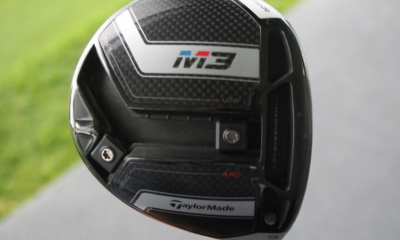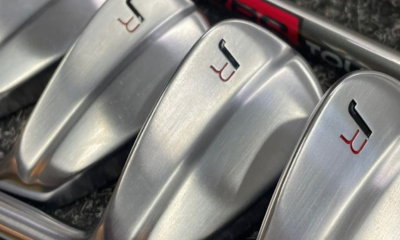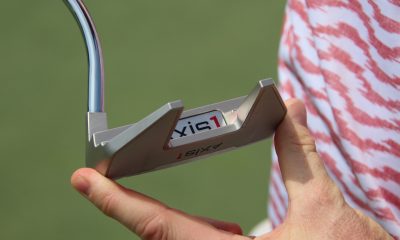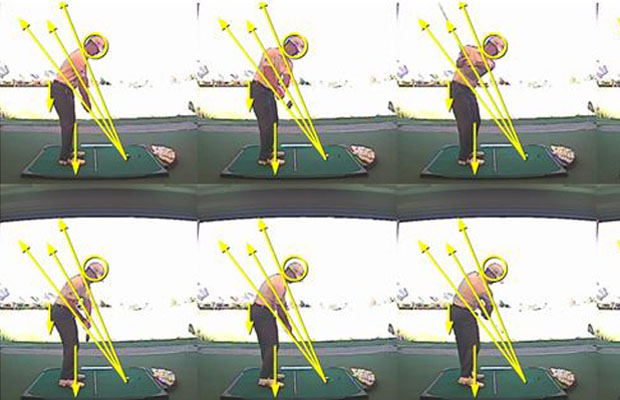Equipment
TrackMan 4 vs. GCQuad: Full tech breakdown (plus Justin Rose explains why he uses both)
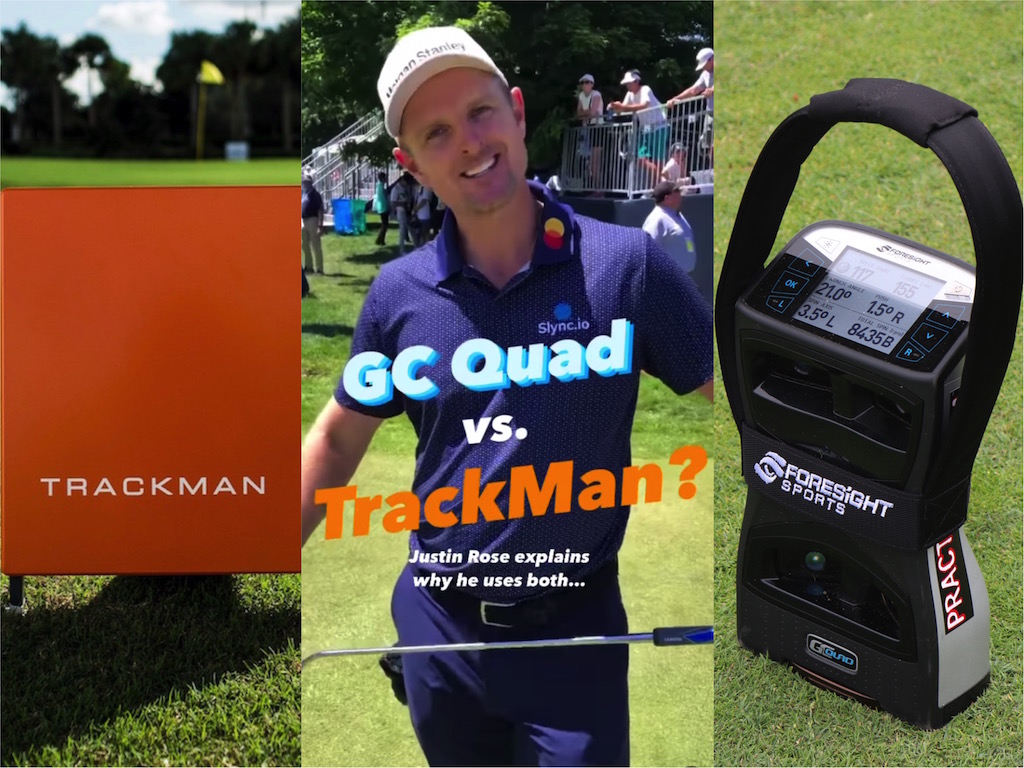
If you walk up and down the range at a PGA Tour event, you’ll notice that nearly every player has a portable launch monitor setup at their practice station. They either have one behind their hitting station, pointing directly down the target line (TrackMan), or in front of them, facing perpendicular to the target line (Foresight Sports GCQuad).
(It should be noted that some players use FlightScope, Full Swing, or another launch monitor system, but for the purposes of this article, we’ll be focusing on TrackMan and GCQuad)
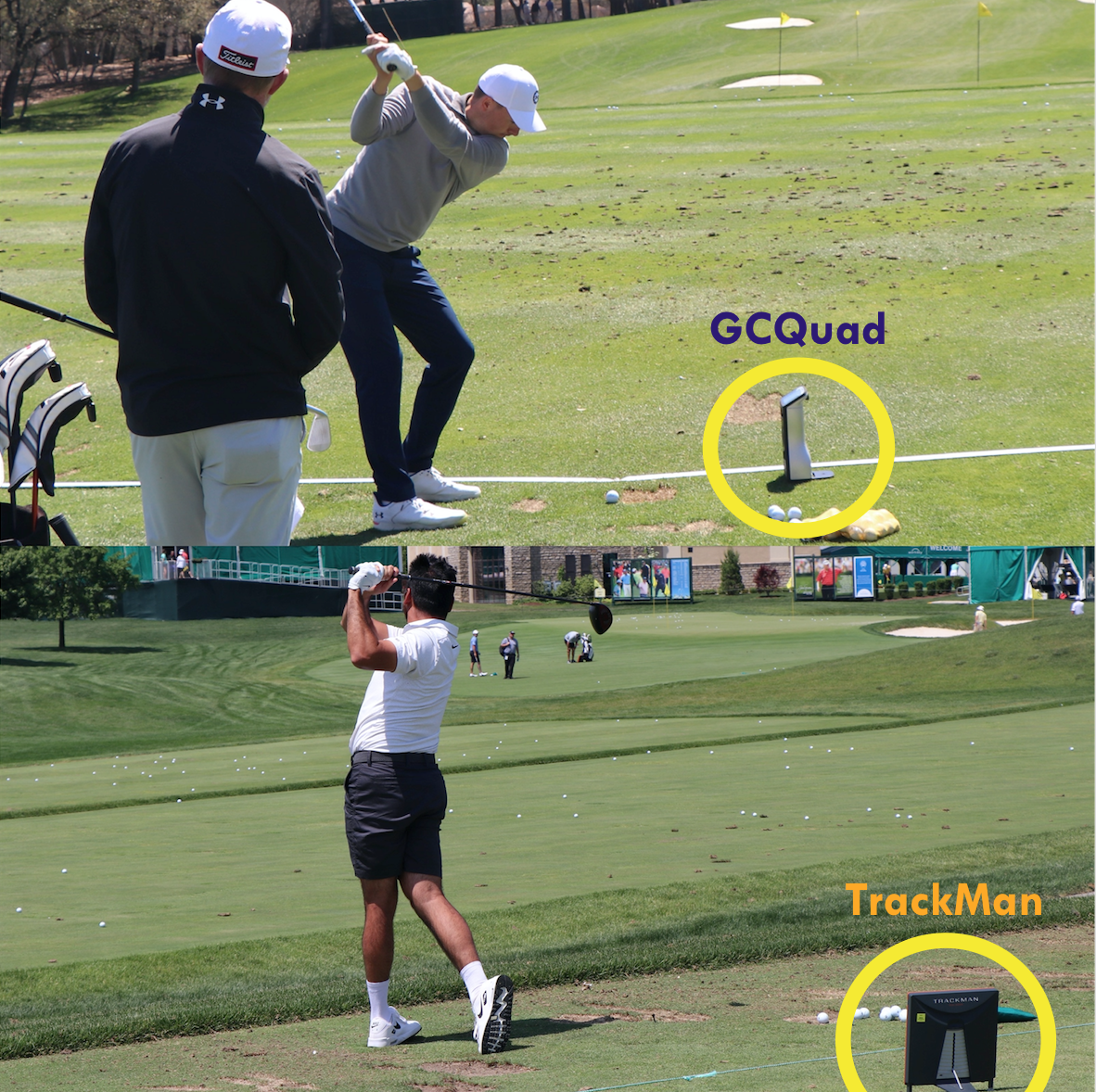
Jordan Spieth (top) was using a Foresight Sports GCQuad at the 2022 WGC-Dell Technologies Match Play, while Jason Day was using a TrackMan 4 during a testing session at the 2022 Memorial Tournament presented by Workday.
Sometimes, a player will actually have both TrackMan and GCQuad launch monitors functioning simultaneously. Justin Rose is one of the players who uses both.
Earlier this year, at the 2022 U.S. Open, I asked Rose why he uses both launch monitor systems at the same time, because, wouldn’t that be a bit redundant?
Before getting into his answer, I wanted to provide an overview of the differences between the TrackMan 4 and Foresight Sports GCQuad systems, and what they measure. The science and engineering behind these systems can get extremely complicated if you get too deep in the weeds, but let’s try to make this as simple as possible.
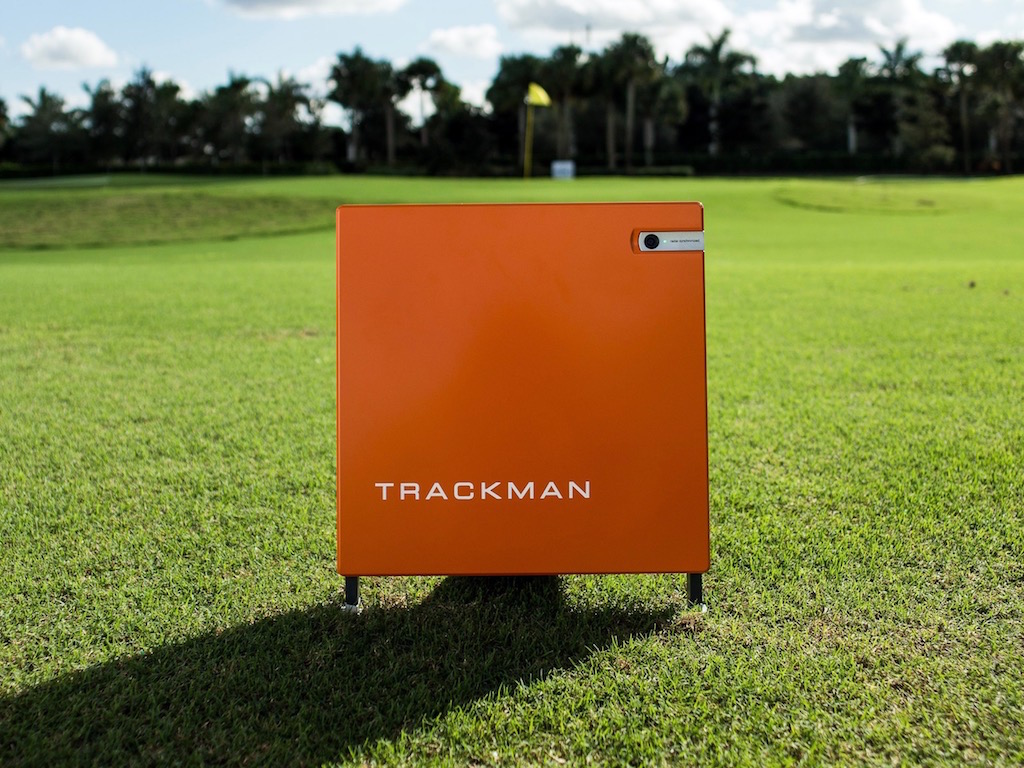
The TrackMan 4 unit ($21,495) – which is the unit that most TrackMan users on Tour currently use – tracks the full trajectory of the golf ball using a dual-radar system combined with OERT (Optically Enhanced Radar Tracking). According to TrackMan, the “OERT synchronizes an inbuilt full HD video camera with the dual radar system to give you the most accurate analysis possible.” Basically, it combines doppler radar and camera technology to track the golf ball and golf club.

Here’s an example of the data feedback you might see from a TrackMan 4, displayed through a computer screen (photo credit: lukecollinsgolf.com)
It should be noted that TrackMan can run in multiple modes, including unnormalized (unaltered data from the full ball flight), normalized (calculates how a ball would fly without wind, and allows users to adjust for ball type, temperature and elevation), and indoor (hitting into a net). In the unnormalized mode, it measures the full flight of the golf ball, from impact until it hits the ground. In the normalized or indoor modes, TrackMan takes impact and initial launch conditions and determines the remainder of the flight data using calculations.
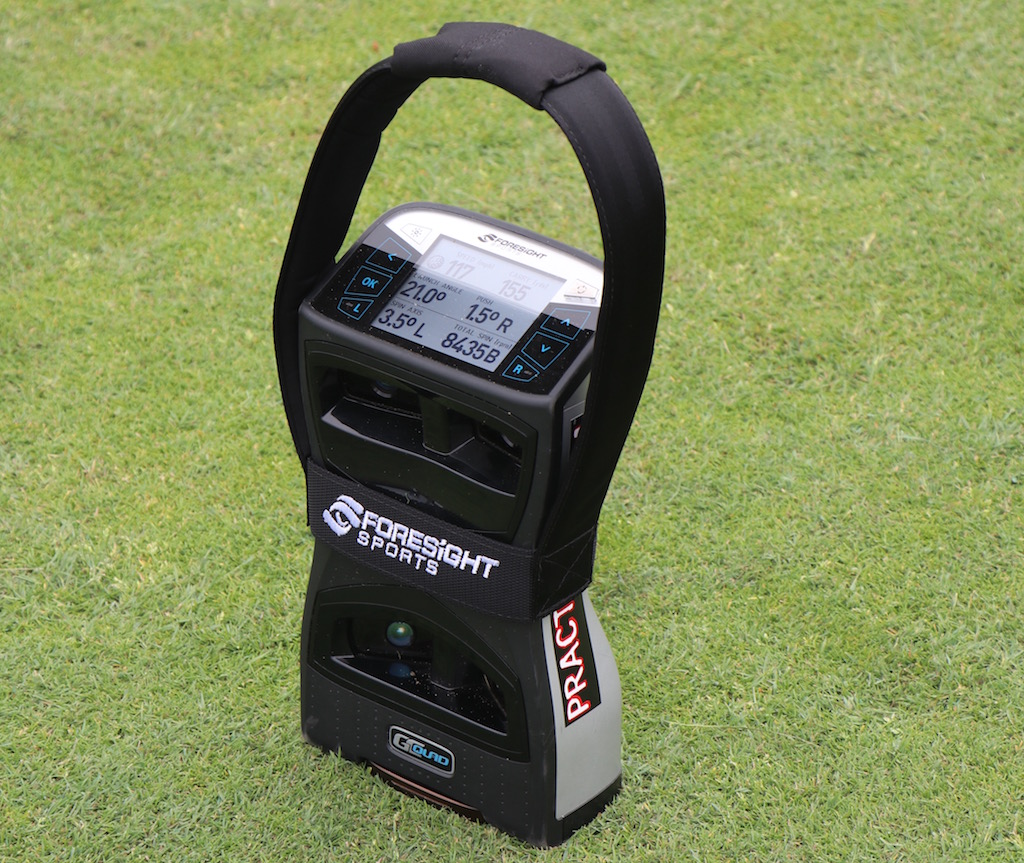
Available in limited qualities to PGA Tour players, Foresight Sports is offering a velcro strap to make the GCQuad easier to carry.
The Foresight Sports GCQuad ($14,500), on the other hand, is Quadrascopic, meaning it uses a 4-camera system. The GCQuad captures data from within the strike zone, and it uses photometric measurements from a side-on angle to measure both golf ball and club data. According to a Foresight Sports representative, “All club delivery and ball launch data is measured, not calculated, or derived from other data parameters.”
Basically, the GCQuad system takes the measurements of the launch conditions and club positions at impact using its custom camera lenses, then determines the remainder of the ball flight metrics using calculations. The GCQuad also makes adjustments to carry distance based on atmospheric pressure, temperature and elevation using a built-in thermometer/barometric altitude sensor, and users can customize altitude.
The GCQuad also has different modes, depending on how many reflective dots you place on the face of the golf club. The graphic below, which is a screenshot from ForesightSports.com, highlights the differences of those modes.
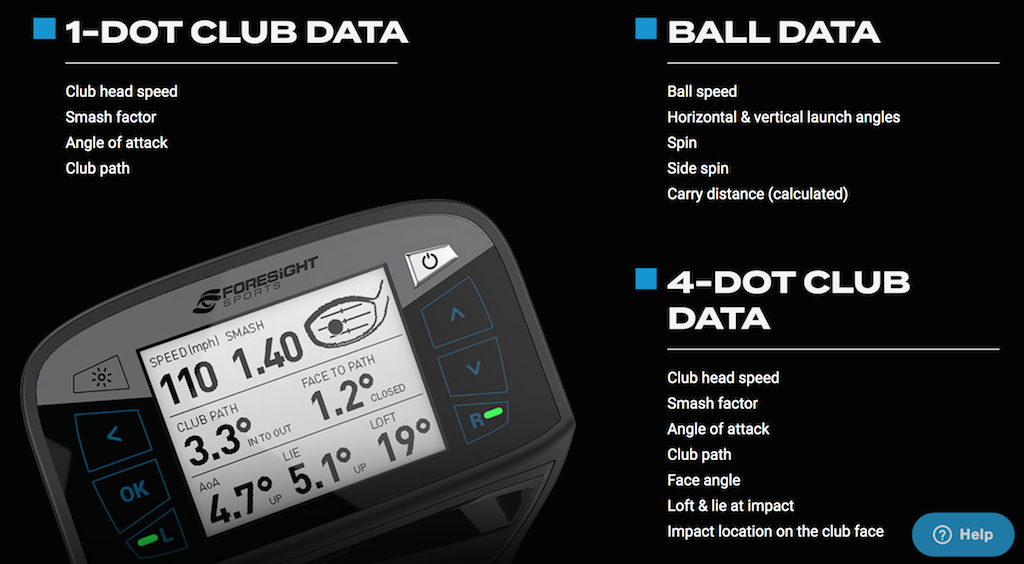
In the real world setting at PGA Tour driving ranges, there’s a few pros and cons to using one system versus the other.
When using a TrackMan, players set up the unit behind the golf ball, and the system displays data feedback on a separate smart device (a tablet, cell phone, or laptop). There are no reflective dots necessary to gauge extensive club data. The GCQuad, on the other hand, gets placed on a side-on angle to the golf ball (a.k.a., facing the player at address) and displays golf ball data directly onto the screen of the unit. For more extensive club data when using the GCQuad, reflective dots must be used, but remember, they are illegal during competition to leave on the face, so players must remember to remove them before play.
There are a few other points of note to consider between the two launch monitors:
1) TrackMan measures club impact parameters by identifying the geometrical center point of the the club head using radar, whereas GCQuad measures the front of the face from a side-on angle using cameras.
2) TrackMan derives spin axis using calculations based on either initial flight (the first 30 yards of flight in outdoor mode), or spin loft and face-to-path ratio (indoor mode), whereas the GCQuad measures the rotation of the golf ball as it launches.
3) TrackMan reports that its dual-radar system captures data at 40,000 frames per second, whereas GCQuad reports that it captures around 10,000 frames per second.
4) TrackMan has performance tools such as the TrackMan Combine – which is a test of strengths and weaknesses – and Test Center 2.0.
All things considered, in a practical sense, since the TrackMan requires multiple devices to see real-time feedback on a shot, the GCQuad is a bit more portable and offers the player immediate ball data just by looking at the unit’s screen. While the TrackMan can be used on the course – and plenty of PGA Tour players do take TrackMan units around with them during a practice round – the GCQuad sees more use on shots hit during practice rounds on the course. TrackMan, however, provides more data points in terms of club data without a barrier to entry of using reflective dots.
As mentioned before, there are pros and cons to each system.
Of course, accuracy is of upmost importance to both players and their coaches, but that’s for them to determine which one is best for their purposes.
Here’s a cool point of note when using both systems simultaneously: players can actually identify the effect of wind on distance in a given environment. Using a TrackMan in the unnormalized mode (where it tracks the full ball flight), combined with a GCQuad (which factors in temperature, air density, and elevation, but not wind), players can simply take the difference in distance between the TrackMan distance (which accounts for actual flight in the wind), and the GCQuad distance (which doesn’t account for wind). For example, say an unnormalized TrackMan measures the shot at 142 yards, but the GCQuad measures it at 145 yards; the effect of wind on that shot would be 3 yards.
OK, so let’s get out of the weeds and into why Rose decides to use both during his practice sessions.
Justin Rose says…
View this post on Instagram
“I use both out of laziness a little bit,” Rose told GolfWRX ahead of the 2022 U.S. Open. “I think the TrackMan can do…they can both do the job of each other, right? But it just depends how you like to see it. From the players point of view, I like the quick reference point the Quad gives me, and then my coach will love the detail that the TrackMan gives him, whether that be attack angle, where the low point is, dynamic swing plane, that type of stuff, which is telling him how the handle of the club is working through the ball. Versus, I’m just trying to get ball speed, and spin, and distance. Those are the quick things that I’m keying into, and the coach is keying into some of the technical side of the swing.”
To see more equipment interviews with PGA Tour players, head over to our @GolfWRX Instagram page.
- LIKE42
- LEGIT9
- WOW5
- LOL3
- IDHT3
- FLOP4
- OB3
- SHANK5
Whats in the Bag
WITB Time Machine: Shane Lowry’s winning WITB, 2019 Open Championship

A surprise winner bolted ahead of the pack in 2019 at Royal Portrush. Entering the tournament on the heels of four missed cuts, all Irishman Shane Lowry did was better his nearest competitor (Tommy Fleetwood) by six strokes at the first Open in Northern Ireland in 68 years.
Here’s what Lowry had in the bag for his absolutely clinical drubbing of the field on the County Antrim coast five years ago.
Driver: Srixon Z 585 (9.5 degrees) Buy here.
Shaft: Mitsubishi Diamana D+ 70 X (45.25 inches, tipped .75 inch, D3 swing weight)


3-wood: TaylorMade M4 (15 degrees) Buy here.
Shaft: Graphite Design Tour AD DI 8 X

Irons: Srixon ZU85 [2 (18 degrees), 3 (20 degrees bent to 21)] Buy here, Srixon Z585 [4 (23 degrees], 5 (26 degrees)] Buy here, Srixon Z785 (6-PW) Buy here.
Shafts: Mitsubishi Tensei CK Pro White Hybrid TX (2), KBS Tour 130 X (3-PW)


Wedges: Cleveland RTX 4 (50 @51, 58) Buy here.
Shafts: KBS Tour Wedge X

Putter: Odyssey Stroke Lab Exo 2-Ball Buy here.
Grip: SuperStroke Traxion Pistol GT 1.0 (custom shamrock)


Ball: Srixon Z-Star XV Buy here.
Grips: Golf Pride Tour Velvet 58R (logo down)
See more in-hand photos of Shane Lowry’s 2019 WITB here.

WITB Time Machine is presented by 2nd Swing Golf. 2nd Swing has more than 100,000 new and pre-swung golf clubs available in six store locations and online. Check them out here.
- LIKE0
- LEGIT0
- WOW0
- LOL0
- IDHT0
- FLOP0
- OB0
- SHANK0
Equipment
Scotty Cameron unveils new B3 Triple Black Design LTD putters

Titleist has today announced the launch of its new Scotty Cameron B3 Triple Black Design LTD putters, a special run of classic, playable blade designs crafted in a Tour Black finish.
Inspired by convertible car culture – where a black paintjob, black interior and black soft top signifies a “triple black” color combination – these special release putters feature four of Scotty’s most popular blade configurations, revisited with his own “triple black” design format: a black finish, black shaft, and black grip.

In select Titleist golf shops worldwide beginning Friday, July 26th, the new B3 Triple Black Design LTD putters will be offered in four models: the Newport 2 (available in right-hand and left-hand), Newport 2 Long Neck, Santa Fe and Catalina. The lineup blends classic setups with modern head shapes and tour-inspired dual-milled face technology.

“Our Triple Black putters have always been a popular option on Tour with players who not only like a stealthy, cool-looking design, but also want an extra solution for reducing sun glare. We created the B3 Triple Black Design LTD putters to give dedicated golfers that tour-quality experience in four classic configurations.” – Scotty Cameron
- LIKE16
- LEGIT6
- WOW8
- LOL2
- IDHT0
- FLOP2
- OB1
- SHANK1
Whats in the Bag
Tiger Woods WITB 2024 (July)

- Tiger Woods WITB accurate as of The Open Championship. Per TaylorMade, Woods has swapped his TaylorMade M3 5-wood for the P770 2-iron he had in the bag at the U.S. Open. The 15-time major champion has also added a healthy amount of lead tape to the cavity of his putter.
Driver: TaylorMade Qi10 LS (10.5 degrees @9.75)
Shaft: Graphite Design Tour AD VF 6 X (45 inches)


3-wood: TaylorMade Qi10 Tour (15 degrees @13.5)
Shaft: Graphite Design Tour AD VF 7 X

5-wood: TaylorMade M3 (19 degrees @18.25)
Shaft: Mitsubishi Diamana D+ Limited 80 TX

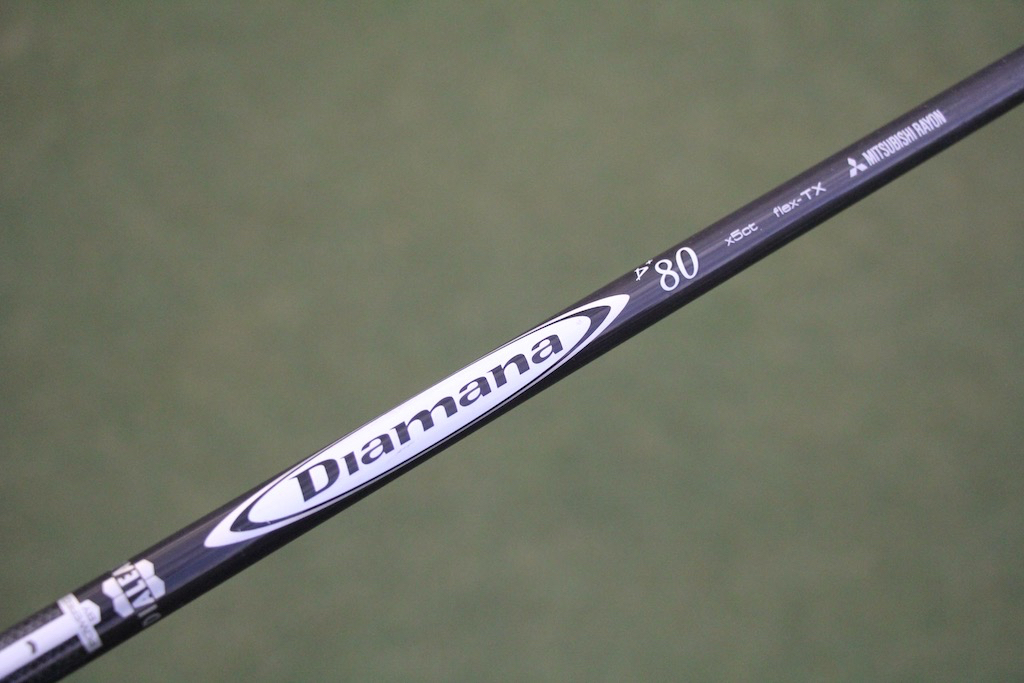
Irons: 2023 TaylorMade P770 (3), TaylorMade P7TW (4-PW)
Shafts: True Temper Dynamic Gold Tour Issue X100 (3-PW)

Wedges: TaylorMade MG4 Raw (56-12TW Proto, 60-TW11 Proto)
Shafts: True Temper Dynamic Gold Tour Issue S400
Putter: Scotty Cameron Newport 2 GSS prototype
Grip: Ping PP58 Blackout


Ball: Bridgestone Tour B X (2024)
Grips: Golf Pride Tour Velvet Cord 58R
Check out more in-hand photos of Tiger Woods’ WITB in the forums.
More Tiger Woods WITBs
- Tiger Woods WITB 2024 (February)
- Tiger Woods WITB 2023 (November)
- Tiger Woods WITB 2023 (February)
- Tiger Woods WITB 2022 (December) (new in-hand photos)
- Tiger Woods WITB 2022 (July)
- Tiger Woods WITB at the 2022 PGA Championship (with a new 2-iron!)
- Tiger Woods WITB: 2022 Masters
- Tiger Woods WITB 2021 PNC Championship (new in-hand photos)
- LIKE2
- LEGIT0
- WOW0
- LOL0
- IDHT0
- FLOP0
- OB0
- SHANK1
-

 News3 weeks ago
News3 weeks agoExperts on understanding ground force and how shoes can impact your golf game
-

 Product Reviews5 days ago
Product Reviews5 days agoThree Swing Challenge: Testing the Edel Array F-2 putter
-

 19th Hole2 weeks ago
19th Hole2 weeks ago‘You’re right, we’re always wrong!’ – Sergio Garcia receives warning during Open qualifier
-

 Equipment6 days ago
Equipment6 days agoWhat clubs do equipment free agents choose to use on tour? We found out
-

 News1 week ago
News1 week agoHighlights from the Wilson Golf Product Testing and Fitting Experience at Pinehurst
-

 News1 week ago
News1 week agoDavis Thompson’s winning WITB: 2024 John Deere Classic
-

 19th Hole7 days ago
19th Hole7 days agoMajor champ ‘disappointed’ not to be chosen as U.S. Ryder Cup captain
-

 Equipment2 weeks ago
Equipment2 weeks agoQ&A: The truth behind Bryson DeChambeau’s new Avoda irons from company founder Thomas Bailey



